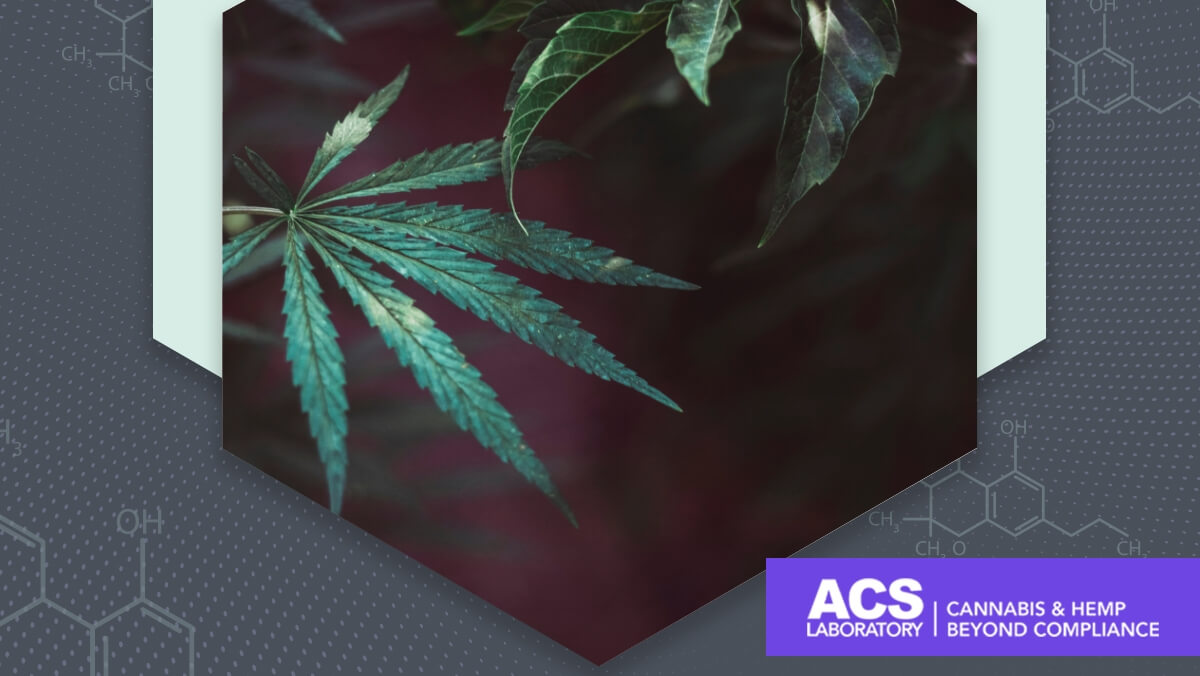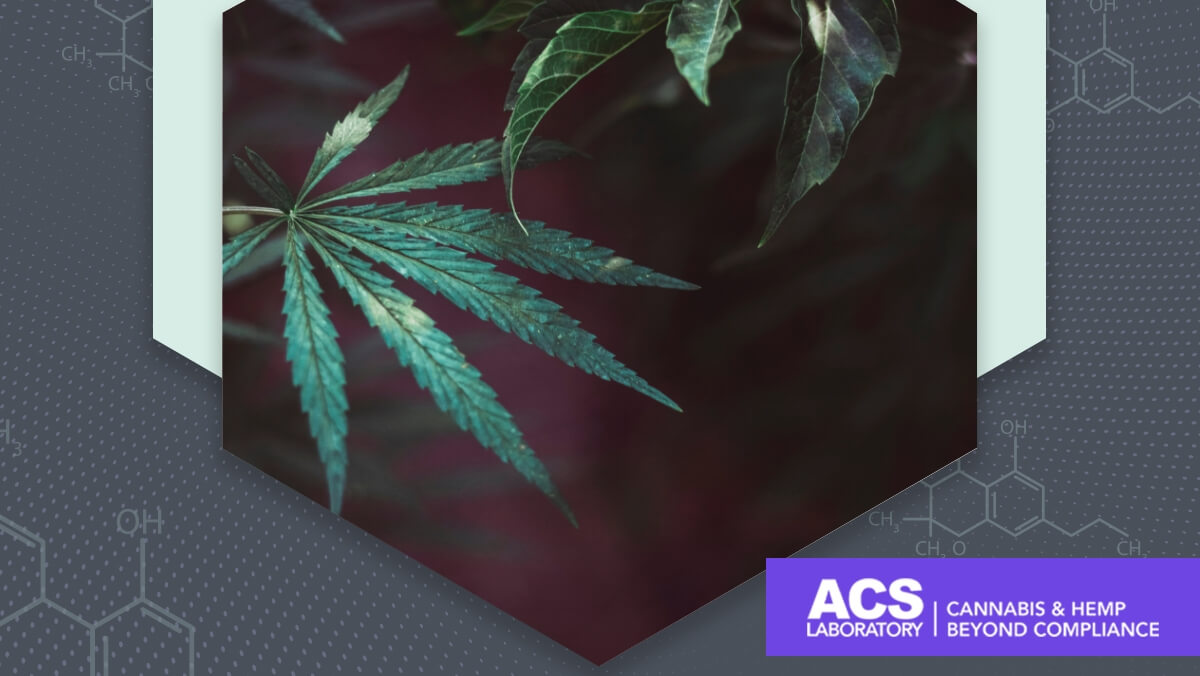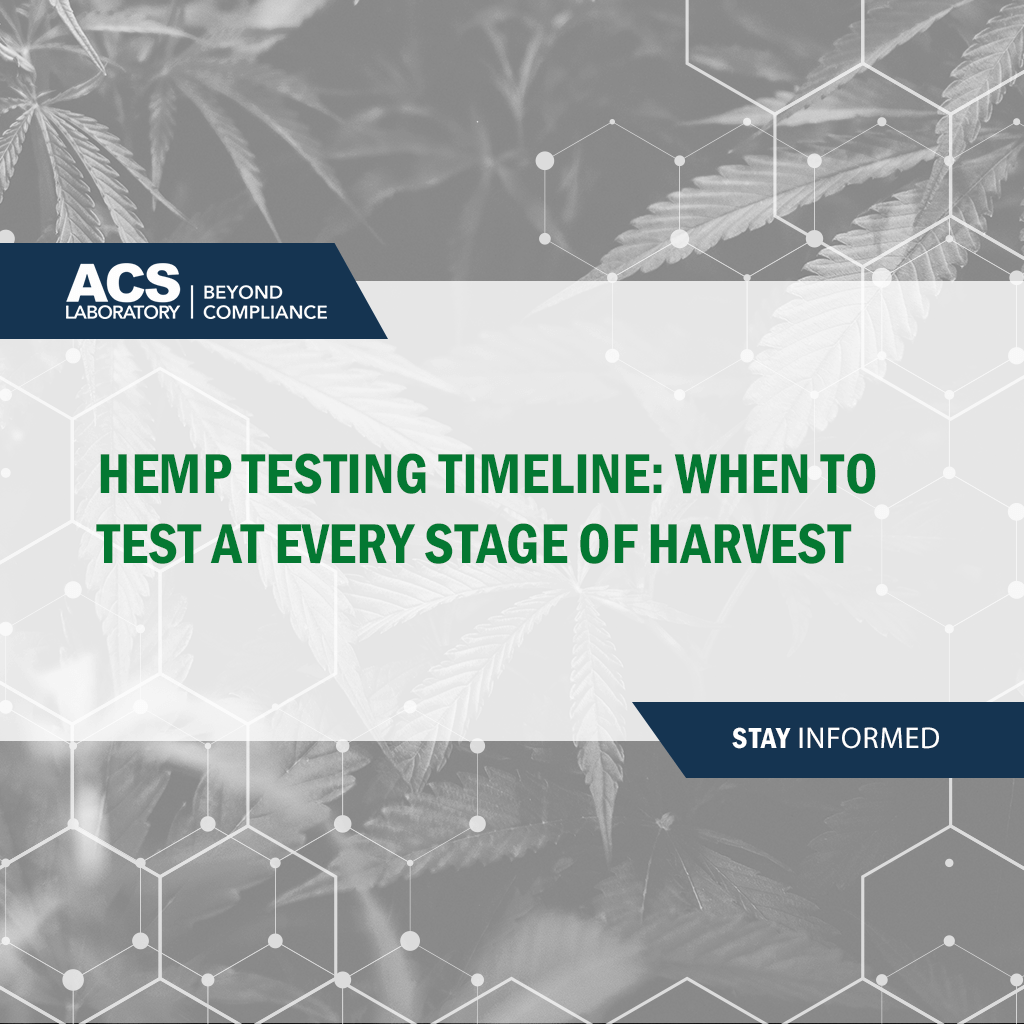Hemp harvest season, aptly named "Croptober," is fast approaching for growers nationwide. This season signifies a thrilling and potentially profitable phase for the industry as growers ready their plots for sale. Yet, success is always uncertain. It requires growers to employ best practices, tools, and processes to guarantee an exceptional final yield.
This article reveals common harvesting blunders and tips to ensure success in 2023.
Avoid the Blunders of Harvests Past

The U.S. Department of Agriculture (USDA) reported that the value of hemp production totaled $238 million in 2022, down 71 percent from 2021. Unfortunately, the statistic aligns with a 45% drop in all-purpose harvested hemp from 2021 to 2022 and significant drops across verticals.
- Floral hemp planted in open: 6.78 million pounds, down 66%; value $179 Million, down 71%
- Grain hemp planted in open: 2.43 million pounds, down 44%; value $3.63 Million, down 39%
- Fiber hemp planted in open: 21.0 million pounds, down 37%; value $28.3 Million, down 32%
- Seed hemp planted in open: 146,000 pounds, down 92%; value $1.48 Million, down 96%
Experts believe this decline was partly due to overhyped market expectations, particularly for CBD, which led to oversupply and a consequent price plunge by as much as 90%. Regulatory challenges, conservative state regulations, and high banking, insurance, and testing costs further hindered the industry.
The crash was also symbolic in areas like seed value and transplants, which saw declines of 92% and 94%, respectively.
A recent Hemp Today article suggests the following industry-wide solutions:
Focusing on Food from Grain: Richard Rose, a Colorado hemp consultant, suggests that farmers focus on the food segment from grain, calling it the low-hanging fruit and a more logical play for the future.
Government Incentives: A call for Congress to include incentives for the hemp industry in the 2023 Farm Bill reauthorization, such as tax credits for hemp fiber use.
Structural Changes: The hemp industry needs structural reform, including overcoming associations with marijuana that continue to create barriers in cost and availability of services like banking and insurance.
Preparing for 2023 Hemp Harvest
Regardless of the regulatory landscape, success relies on producing a high-quality yield. This entails a detailed plan that includes minimizing crop transfers, using modular equipment, optimizing the drying environment, and conducting moisture and water testing.
Best Practices for Hemp Harvesting and Drying
1. Prune Excess Foliage
Removing fan leaves and excess foliage without disturbing bud sites ensures essential airflow in the drying room and a better moisture removal rate. Farmers should do this before harvest, during the last week of the flowering stage to minimize the labor involved and make the process more manageable.
2. Reduce Watering
Two popular steps for pre-harvest are to dim the lights and stop watering plants about 24-36 before cutting begins. This harvest method leverages transpiration, or when water evaporates through a plant’s stems, leaves, and flowers.
Reducing water on the plants means they weigh less, speeding up the harvest process and saving money. It can also jump-start the drying process and help the HVAC system work less hard when drying starts.
3. Minimize Touches & Transfers
Growers should handle and move plants as little as possible during harvest. Every touch and transfer could damage or contaminate the product. Growers should seek to spend at most one day on harvesting and transferring a single crop into a designated drying room.
4. Use Modular Dry Carts
Modular dry carts are great investments for moving plants to the dry room. Many modular carts incorporate racks and double as drying spaces. These carts, which come in various styles and storage options, simplify the transfer process, reduce touch points, and minimize damage.
5. Weigh Quality Against Output
Two main load-in strategies exist in manufacturing environments: single or continual. A single load-in approach involves moving one harvest batch into a single drying room, while a continual method involves multiple harvest batches in the same drying room. Most prefer the single strategy for best quality control. However, a continual approach allows for higher production output. Growers must determine the suitable method based on their final product.
6. Prevent Mold Growth
Whether hanging whole plants upside down or choosing the “hook and hang” method (cutting branches into individual flower sections and leaving a small branch section or “hook” at the base of each bud to facilitate hanging), consistent spacing is key.
Growers should ensure plants do not touch to promote even drying and prevent mold growth.
7. Maintain a Controlled Drying Environment
Many factors affect the drying rate, including the weight of the wet plants, room temperature, humidity, airflow, and time. A suitably sized HVAC system or dehumidifier is essential because too little or too much moisture will spoil the crop. Growers should keep the doors closed and the lights down to maintain an undisturbed drying area.
8. Track Moisture Content & Water Activity
A standardized drying process involves keeping track of moisture content and water levels using a moisture analyzer and water activity meter. In general, hemp should have a 10% and 15% moisture content to prevent mold growth and ensure proper preservation.
The water activity scale goes from 0 (bone dry) to 1.0 (pure water). As the drying process begins, the ideal water activity level for hemp flower is between 0.55 and 0.65. This range keeps the flower dry enough to prevent mold growth but not so dry that it becomes brittle and prone to breakage.
Growers must check moisture and water readings to fine-tune HVAC settings, which reduces the risk of product loss and maximizes revenue.
9. Keep It Clean
Harvesting and drying hemp is an inherently messy process. However, there are steps growers can take to maintain a clean environment and minimize messiness.
One strategy is to perform the “bucking” or trimming process in the drying room. The logic here is that the drying room already needs to be cleaned, so it confines the mess to one area rather than creating two areas that require cleaning. Simplifying cleanup this way also reduces the risk of cross-contamination.
Growers must also emphasize the need to work carefully throughout the drying process and provide training on proper handling techniques. When spills or messes happen, the team must clean them up immediately.
Essential Harvesting Equipment & Processes
Trimming
OR
◊ Combines
When hemp crops are ready for harvest, farmers must choose equipment that’s best suited for their end product. Hemp CBD farmers especially must get this part right or risk destroying the buds that their buyer contracts rely on. If things go wrong during this stage, hemp CBD can lose profitable flower.
Manually trimming hemp CBD crops with heavy-duty shears is still the preferred method because it allows farmers to separate the top of the plant from the stalk, preserving the integrity of the CBD-rich buds. Using shears to cut hemp from their plots ensures they remain clean and their resin trichomes remain intact. With this process, hemp farmers increase their chances of producing crops with a full spectrum of cannabinoids, including CBD as well as therapeutic terpenes and flavonoids.
Alternatively, hemp farmers may decide to go the mechanical route, using machines such as combines to harvest their plots. Combines trim hemp plants at the base and can cut 60 acres a day. Their advantage is speed and long-term cost savings; however, they have also been known to shatter seeds and buds in the process. That makes combines highly desirable for large-scale operations and those growing hemp for its fibrous stalks.
But they’re less common with hemp CBD farmers. That said, technology is ever-evolving, and modified combines do exist that claim to work fast while preserving the plant’s delicate trichomes.
Drying
◊ Racks, screens or wires with dehumidifiers and fans
OR
After harvest, growers must immediately move their industrial hemp biomass or flower to a facility for three to seven days of drying. It's extremely important to get this part right to maximize the terpene profile, fragrance, flavor and output of the end product. However, if hemp is harvested too wet, dried too slowly, or deprived of ventilation and temperature controls, it may become damaged and unusable.
For example, overly moist hemp is susceptible to developing mold or other bacteria. That’s why farmers need to adequately plan and prepare a drying facility to create a product that is suitable for sale and commands the highest possible price point.

Hanging or Screen-Drying
Depending on the size of the growing operation, most hemp CBD farmers use racks, wires or screens to hang (or lay) individual stalks. This manual process is the safest because larger buds take longer to dry than smaller buds and need to be monitored individually to prevent terpene damage. This process also requires the farmer to use dehumidifiers or ceiling fans to control the humidity and ensure the temperature remains below than 75 degrees.
If the temperature rises above that level, the buds may turn brown and taste bad. So the goal with this equipment is to move the wet air away from the flower and replace it with dry air to continue pulling the moisture out.
Mechanical Drying
Hanging or screen-drying is the most precise method, but mechanical drying is also an option for industrial hemp biomass and large-scale CBD farmers. Bulk-drying systems for biomass often work by passing hemp over vibrating screens while forcing air up through it, using as little heat as possible. Whole-flower mechanical dryers can reportedly slowly and evenly heat hemp while gently cycling it around. These types of dryers can dry up to 1,000 pounds per hour.
Curing
◊ Lined super sacks and/or totes with shucking scissors
OR
After drying the hemp to the point that the stalk easily snaps in half, it’s time to cure the product to remove the remaining moisture and cut the remaining stalks. If the farmer or processor does not get this part right, the buds will degrade and lose potency much faster while in storage.
On the other hand, if done properly, the curing process is what will set the hemp flower apart from its competitors. That’s because the curing phase locks in the smell, taste and look of the plant.
Lined Super Sacks and/or Totes with Shucking Scissors
Hemp CBD farmers and those growing smokable hemp flower must consider a manual approach to carefully separate and store the buds for curing. In this case, hemp growers can use shucking scissors to remove the flower from the stalks, and totes, nitrogen-filled bags or lined super sacks for storage.
During the storage phase, the grower (or his employees) must regularly open the containers to allow oxygen to flow in until the buds reach an optimal moisture-content level. This can take up to one month and requires a large investment in manual labor.
Cannabis Curing Machine
For the mechanically inclined, hemp curing can be accomplished in as little as 24 hours using curing machines. Brands that make these machines claim the reduced curing time can prevent issues like degradation and mold that can develop over time. These machines often work through the use of “freeze-drying” technology to remove the moisture from the flower or trimmed plant while preserving the hemp flower, with no shrinkage, a rich color and flavor, and stable cannabinoids and terpenes.
Post-Harvest Trimming
OR
Final trimming often generally occurs after curing, which requires peeling away the bud’s longer protruding leaves and stems as close to the bud as possible. This gives the buds an aesthetically pleasing appearance, which appeals to buyers and consumers alike.
Pruning Shears
Those who decide to manually trim generally use pruning shears, along with trays to collect any trimmed debris. As with the previous harvest steps, hand-trimming ensures precision, but it also requires extensive labor, time and overhead costs.
Trimming Machine
Alternatively, machine trimming is an option that can save money and scale up for large organizations. For industrial hemp biomass producers, machine trimming is a no-brainer. But hemp CBD farmers have options as well. Twister Trimmer, for example, promises to preserve the profile of the flower, retain its “natural beauty,” and preserve the trim for use in extracts.
Packaging Equipment
◊ Climate-controlled environment
After hemp is cured and trimmed to perfection, it needs to be stored properly to preserve its structural integrity and terpene/cannabinoid profile. If a farmer or processor fails to get this part right, degradation and mold contamination can occur right before the finish line. Because hemp material generates heat, it could also theoretically catch fire if not stored properly.
However, if farmers get it right, the flower can last up to a year while maintaining its rich color, fragrance, flavor and therapeutic profile. A year may seem like a long time, but farmers sometimes have to wait long periods before securing a purchase contract.
For best results, cured and trimmed hemp should be vacuum-sealed and stored in a UV-blocking bag or thick plastic bin. The material of the bag or bin should also be considered safe by the Food and Drug Administration to prevent unwanted cross-contamination.
But the packaging is only half the battle. Packaged hemp must also be stored in a cool (50 to 60 degrees), dry environment, away from natural light, to ensure it remains preserved, regardless of the type of bag or barrel used.
Cellars are great environments to store packaged hemp. Other options include commercial freezers with desiccant packs, and pickle barrels buried underground. The range of options are as diverse as the growers themselves.
The Bottom Line
Hemp farmers and processors must consider market conditions, choose their vertical wisely, and produce the highest quality product to earn the best price and gain the largest market share. High-quality output requires industry-leading tools and practices. We’re here to help.

ACS Laboratory supports hemp farmers every step of the way, with advanced moisture testing, pre-harvest potency and purity analyses, and post-harvest compliance testing. Contact our team today to get ready for the 2023 harvest season.


.jpg)






.png)
.png)
.png)
.png)
.png)